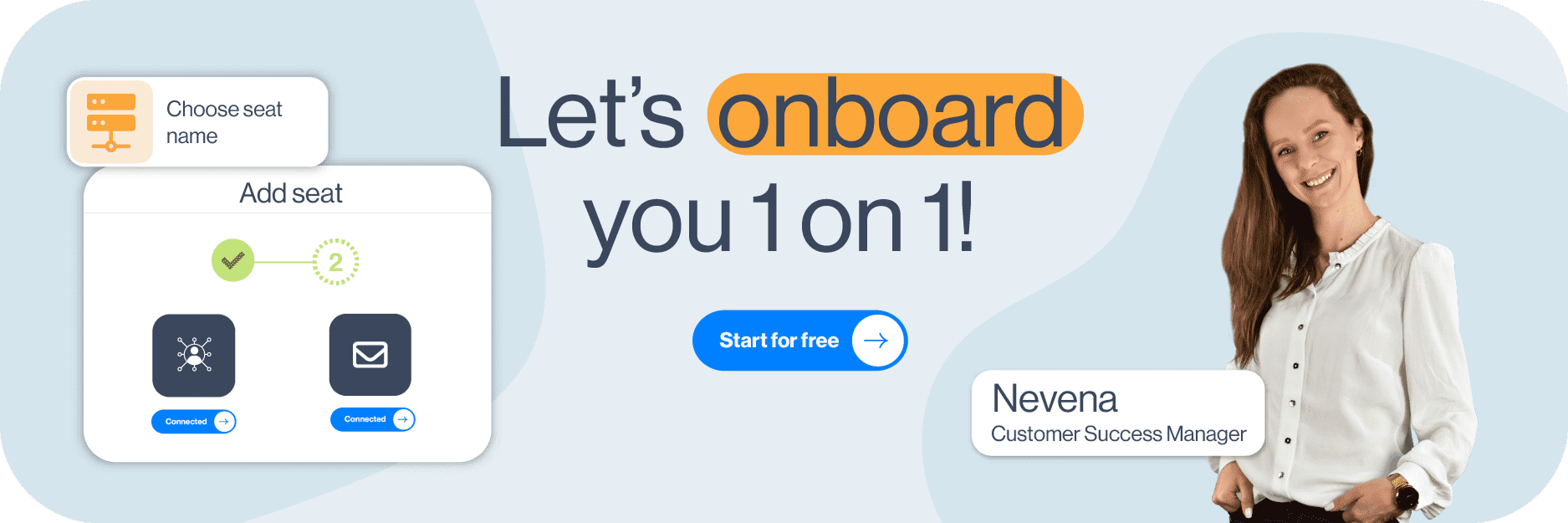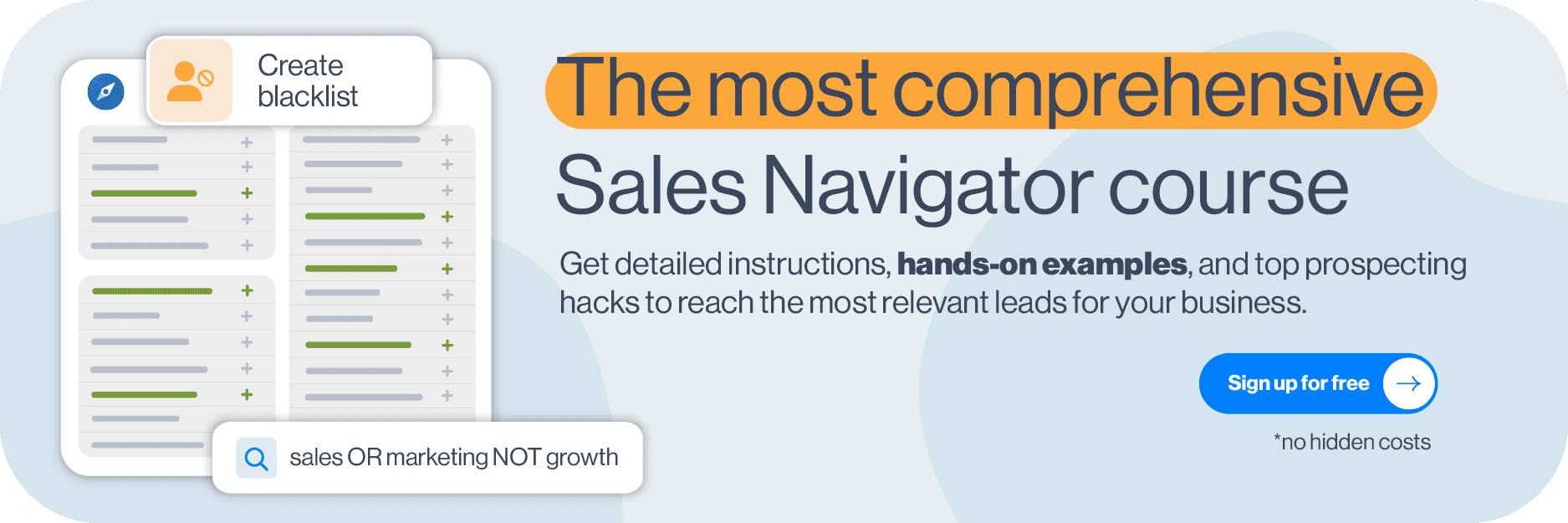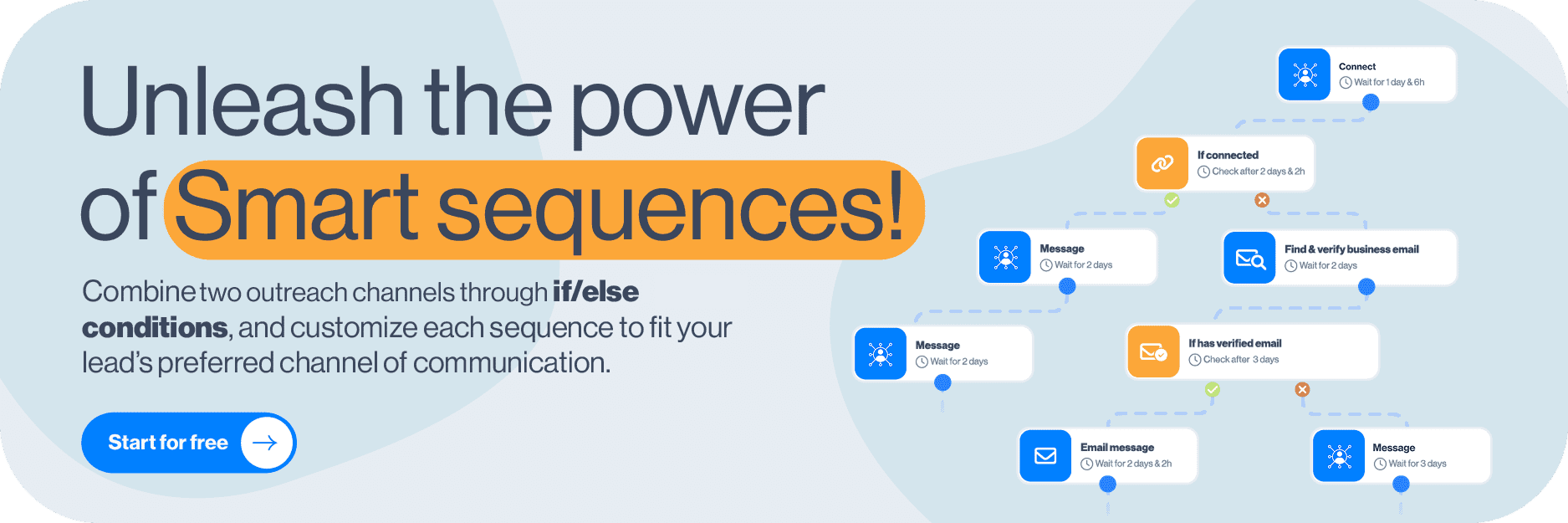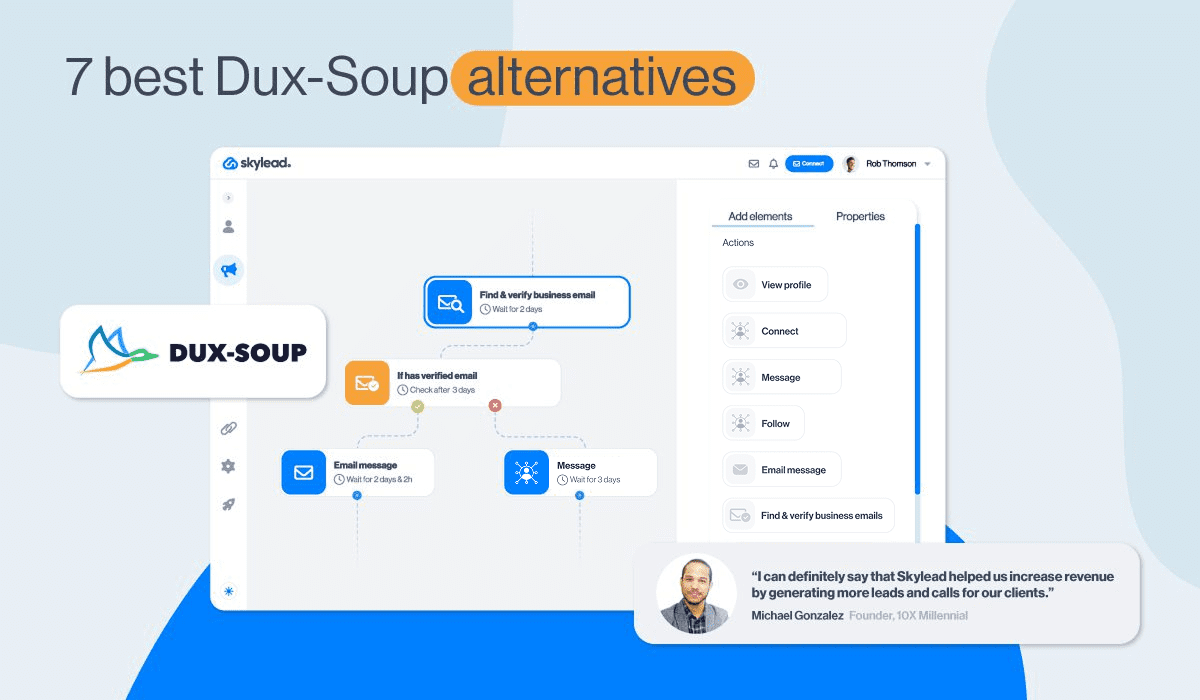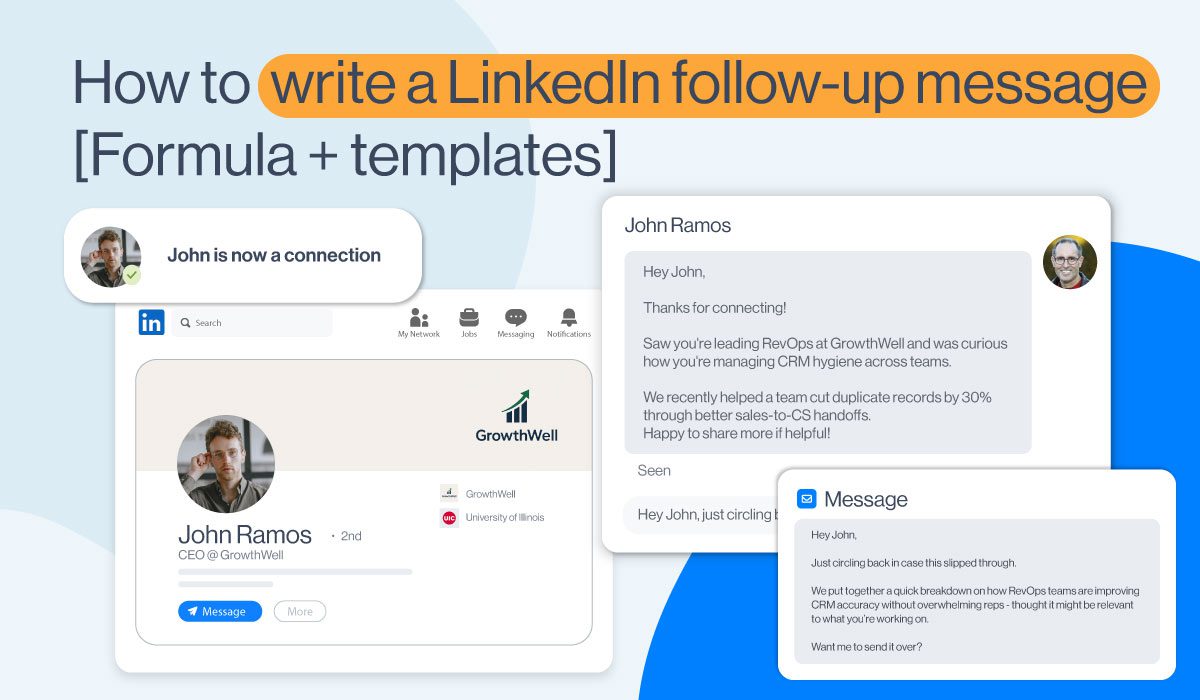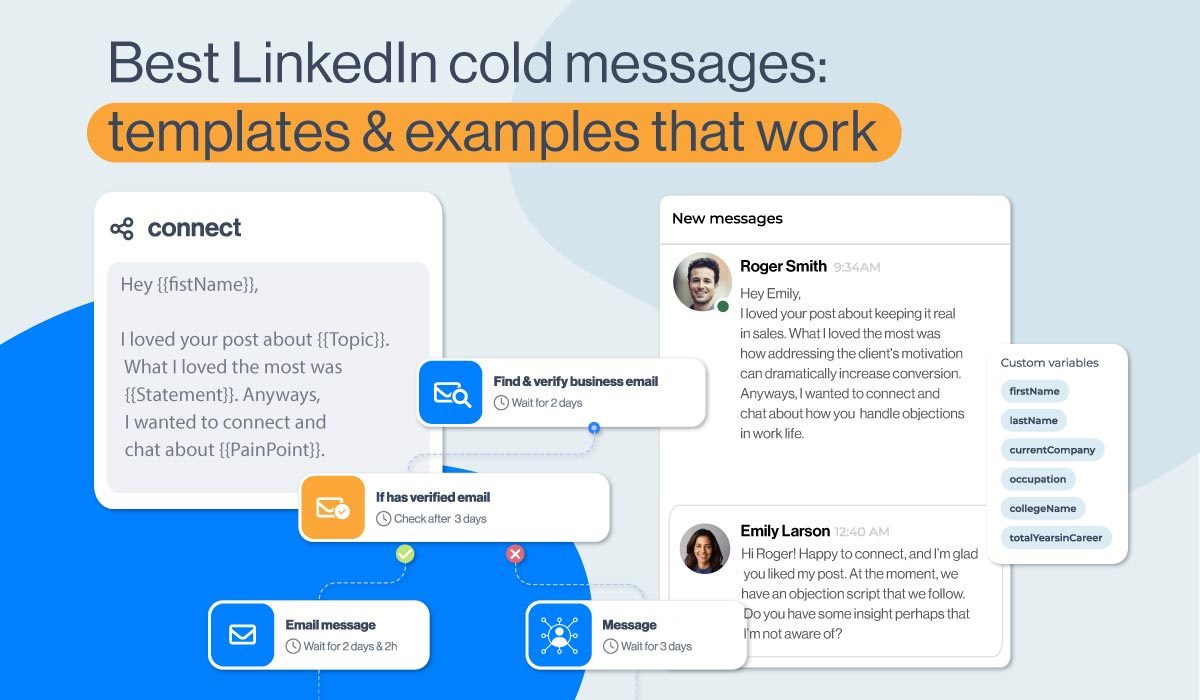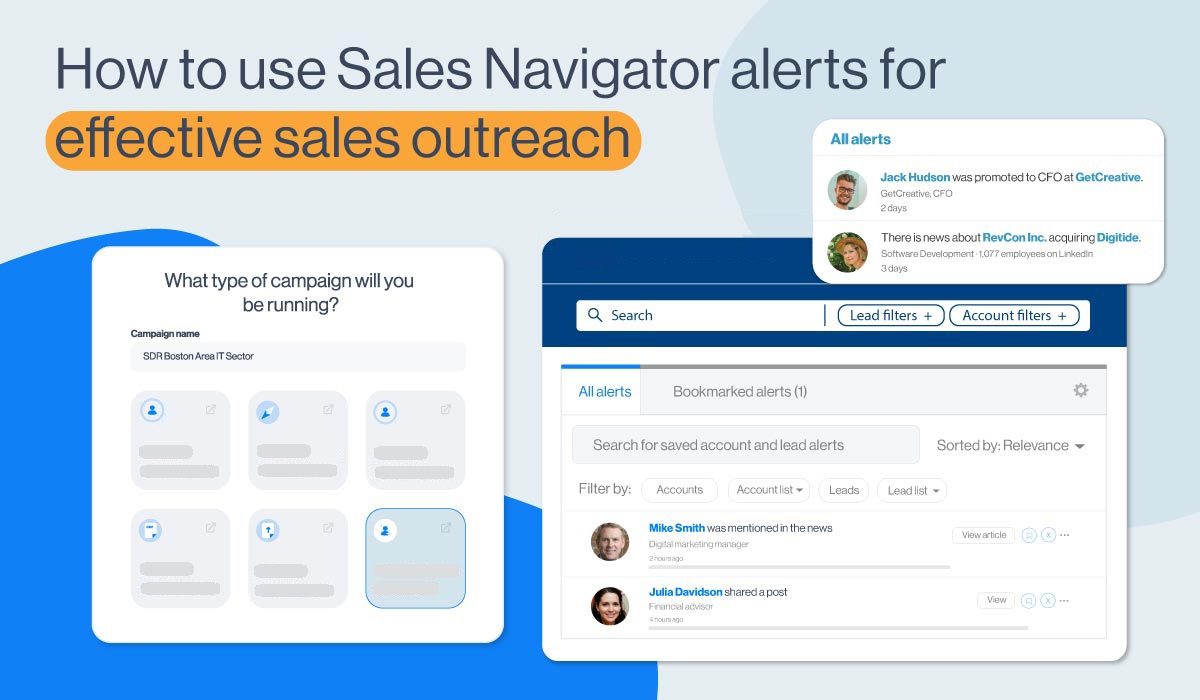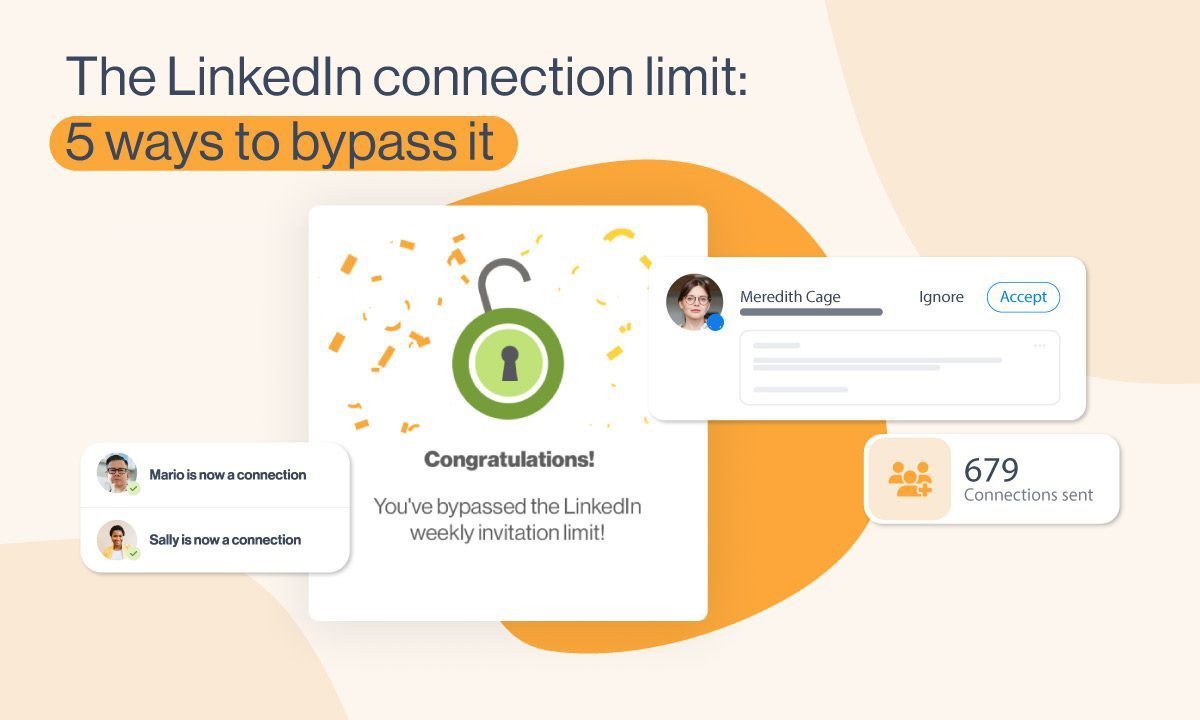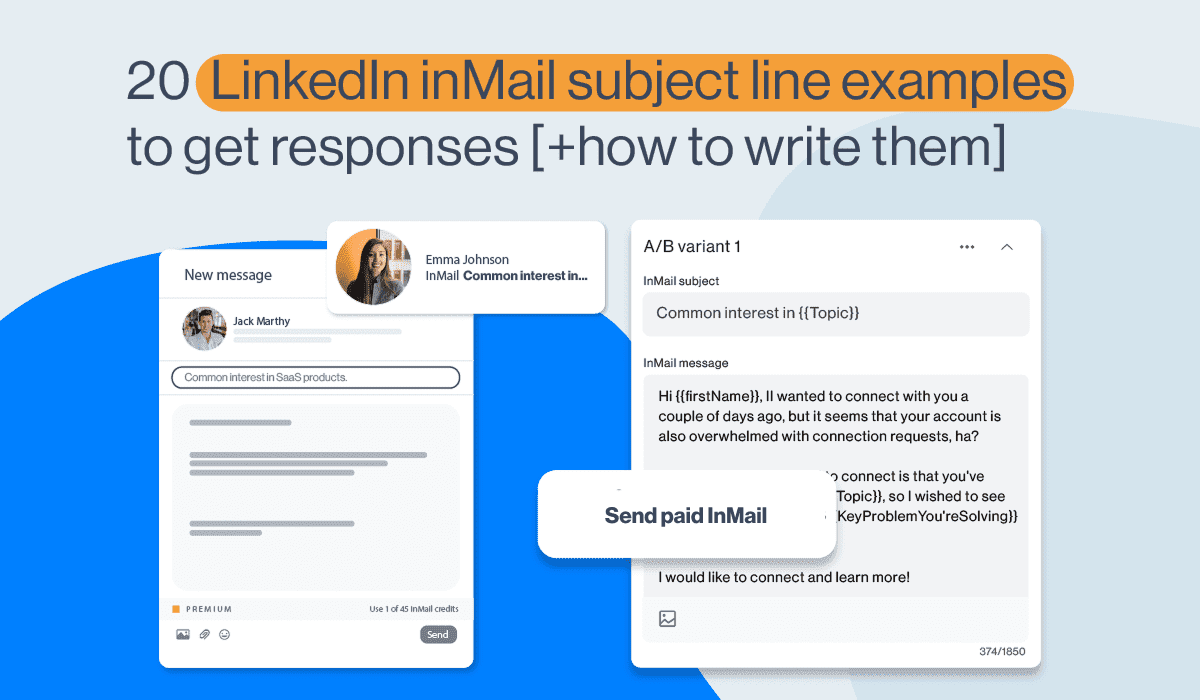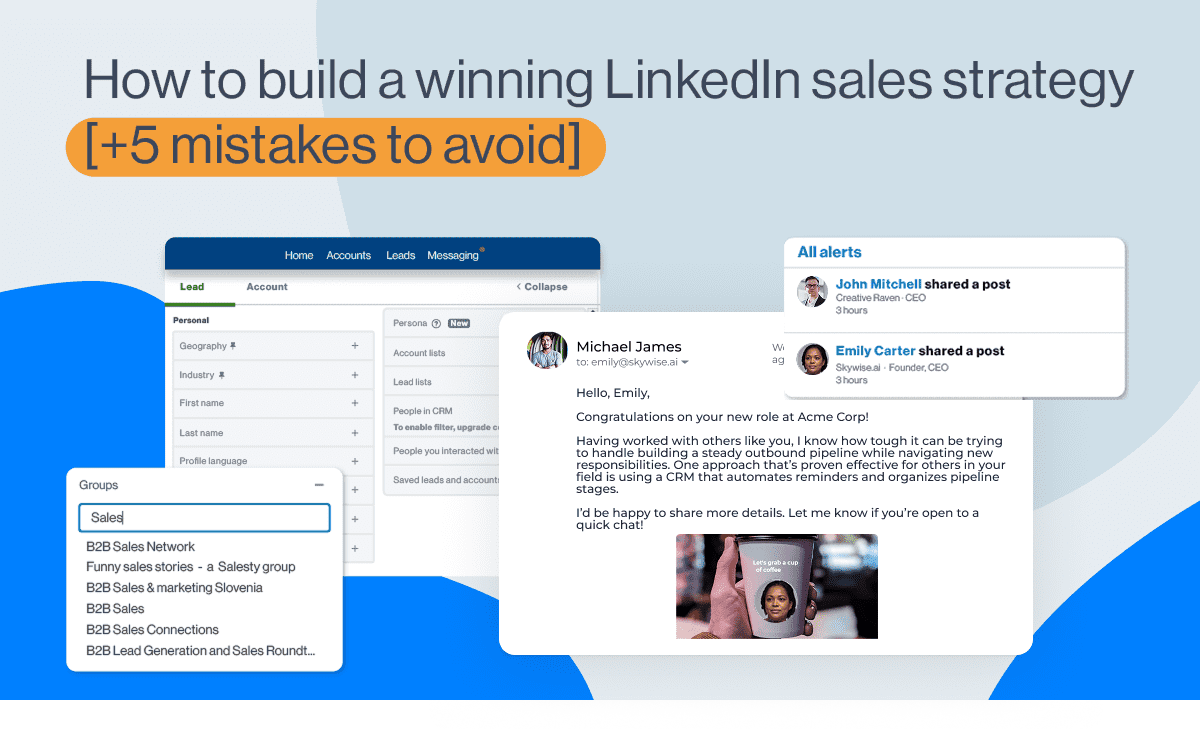How to find someone’s email on LinkedIn in 10 ways [free options included]
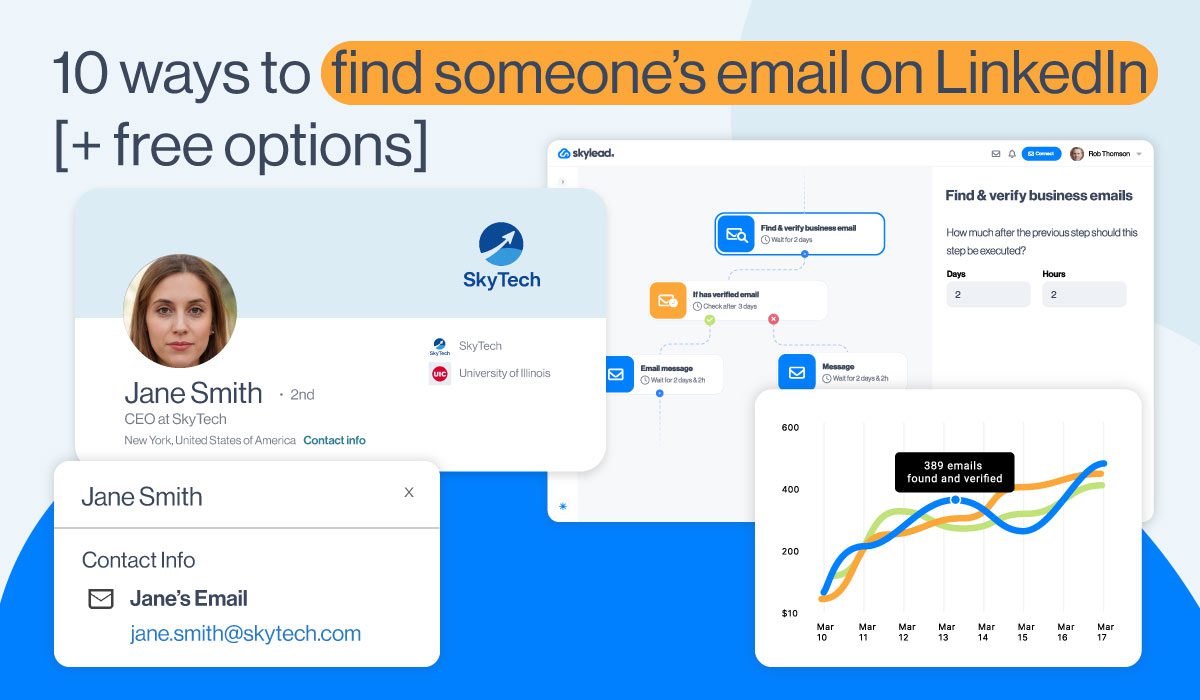
Disclaimer: Skylead is not affiliated, endorsed by, or connected with LinkedIn in any way.
You’ve found the perfect prospect on LinkedIn. Right title, right company, right fit. Everything lines up. Except one thing: You have no idea how to reach them. Sure, you could try a connection request. Maybe even an InMail. But the truth is, most business decision makers’ inboxes are flooded. And if you want to stand out, you need more than one way in. And for that, you need their email. That begs the question: how do you find someone’s email on LinkedIn?
Well, there’s no single button you can click. LinkedIn doesn’t exactly hand over contact info on a silver platter, especially if you're not connected.
But that doesn’t mean you’re stuck.
Today, we’ll show you 10 proven ways to find someone’s email on LinkedIn. We’ve included a mix of free tricks, and smart search tactics.
Does LinkedIn show someone's email?
Yes. But only sometimes, and only if the user allows it.
By default, LinkedIn hides email addresses from public view. If you're already connected with someone, you might see their email under the ‘’Contact Info’’ section of their profile. Notice how we said might? That’s because it depends on their privacy settings.
On the other hand, for 2nd or 3rd-degree connections (a.k.a. people you’re not connected with), LinkedIn does not display any email information at all.
So, unless you are connected with the prospect and they have explicitly made their email visible, you're out of luck. Within the platform, that is.
Why bother with finding someone’s email on LinkedIn?
Simple: Email gives you another touchpoint.
LinkedIn prospecting might be the best way to find leads, but email is where most conversations actually happen. And for good reason. Email lets you reach people directly, outside the LinkedIn connection limit, LinkedIn inMail cap, or message throttling.
More importantly, email still works, especially in B2B. In fact:
- According to Constant Contact, email open rates across industries average 32.55%, with click-through rates at 2.03%.
- Statista also reports that email delivers an average ROI of $36 for every dollar spent, and up to $45 for some industries.
And people aren’t just opening emails; they’re engaging with them. 61% of recipients spend at least 8 seconds reading an email, which is more than most people spend on a social post.
Also, when you combine email with LinkedIn touchpoints (e.g., profile visits, messages, or connection requests), your chances of a reply go up significantly. It’s all about multichannel visibility. In other words, being present where your lead is, whether that’s their inbox or their feed.
So, if you're serious about cold outreach, finding your lead’s email is step one.
And now that we’ve covered the “why,” let’s get into the “how.”
How to find someone’s email on LinkedIn [10 ways]
Below are 10 proven ways to find someone’s email through LinkedIn, directly and indirectly. Some are simple, free, and manual, whereas others involve tools. But the important thing is: all of them work!
Method 1: Check their LinkedIn profile
How to find someone’s email on LinkedIn? Well, let’s start from the obvious place - their LinkedIn profile!
Namely, there are 3 sections where people sometimes leave their email address:
1. Contact Info section
If you're already connected with the person, click the ‘’Contact Info’’ button on their profile (just under their name and LinkedIn headline).
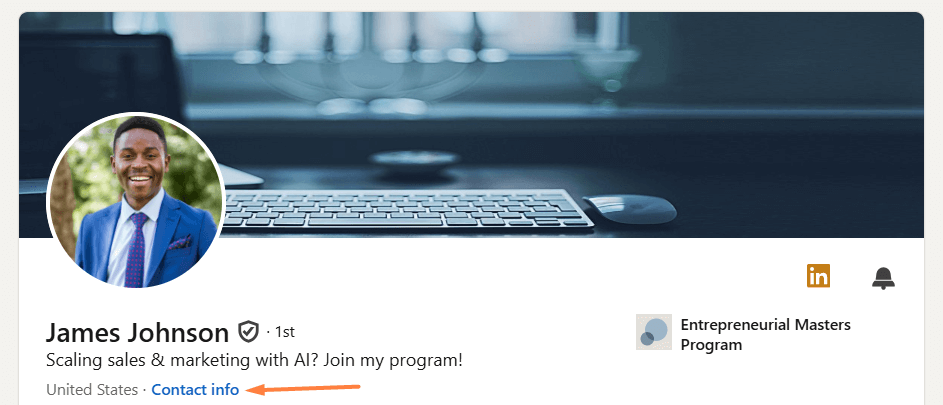
If they’ve chosen to share it, their email will be listed there.
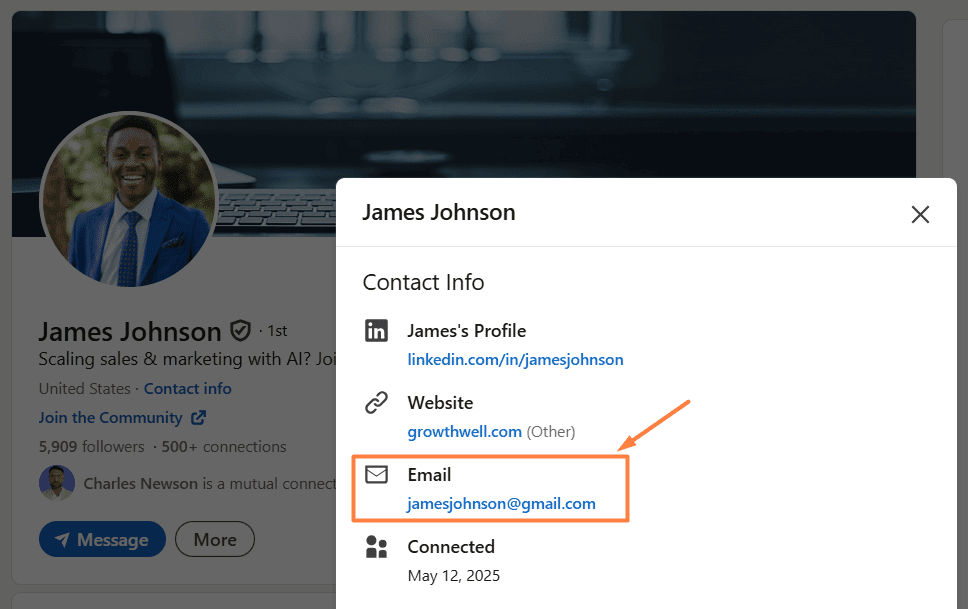
That said, don’t get your hopes too high. Not everyone makes their email visible, and even when they do, it’s often the one they used to create their LinkedIn account. So, it might not be their business email. Still, it’s worth a look.
2. LinkedIn cover photo
Some professionals, freelancers, marketers, influencers, and founders, in particular, typically opt for creating a custom LinkedIn cover image that includes an email address so as to make it simple to contact them directly. So, if your leads’ cover image looks branded, don’t forget to give it a quick glance. Their email address might just be hiding there.

3. LinkedIn summary (About section)
If the Contact Info section and the cover image don’t give you much luck, scroll down to their LinkedIn summary section and read through it, especially the last few lines. Some users drop their email there as a subtle call to action, like:
“Feel free to reach out at name@company.com.”

No email there? No worries! This section can still prove useful once you’ve found their email using one of the other methods below. How? Well, it can give you valuable insights into your lead, such as their pain points, which you can reference later in your email for more personalized outreach.
Method 2: Use email finder tools & Chrome extensions
If the email isn’t visible on their profile, you could also use an email finder tool, either a web-based platform or a Chrome extension.
Web-based email finder tools
These tools help you find someone’s business email address using typically just 2 data points:
- Full name
- Company domain
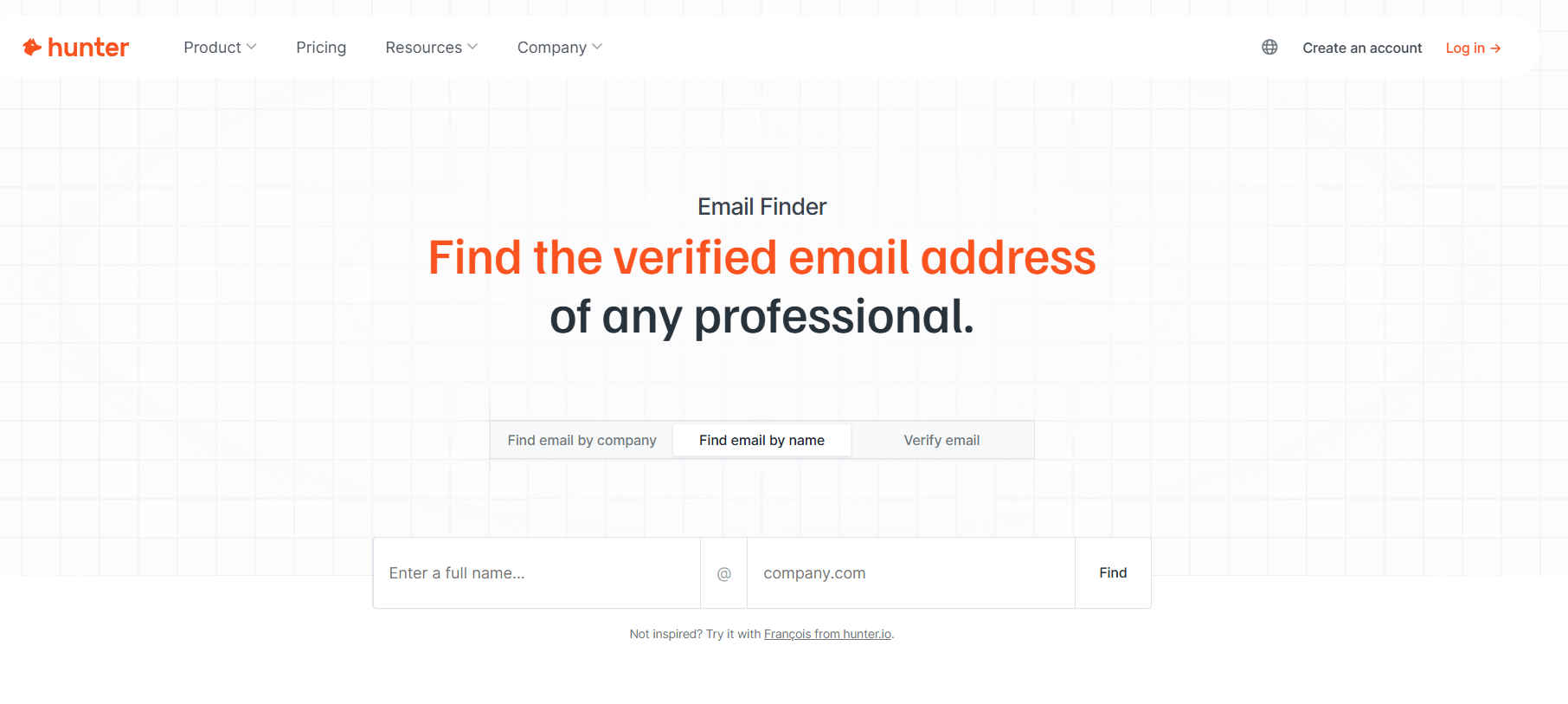
Speaking of specific tools, your best bet is going with:
- Hunter - Free plan with 25 monthly finder credits (additional paid plans with more credits are available).
- Anymail Finder - Starts at $14/mo for 50 credits.
- Uplead - Starts at $99/mo for 170 credits.
These platforms cross-reference databases and known domain patterns to give you a likely email match, sometimes even a verified one. What’s more, you don’t have to install anything or interact with LinkedIn in ways that breach its terms.
Method 3: Export your 1st degree connections’ emails
If you've been steadily growing your LinkedIn network, your 1st-degree connections might be a hidden goldmine of contact information, including emails.
LinkedIn allows you to export your connections' data, which may include their email addresses (if they chose to make them visible).
To do it, firstly, click on the ‘’Me’’ icon in the top-right corner of LinkedIn. Then, navigate to Settings & Privacy.
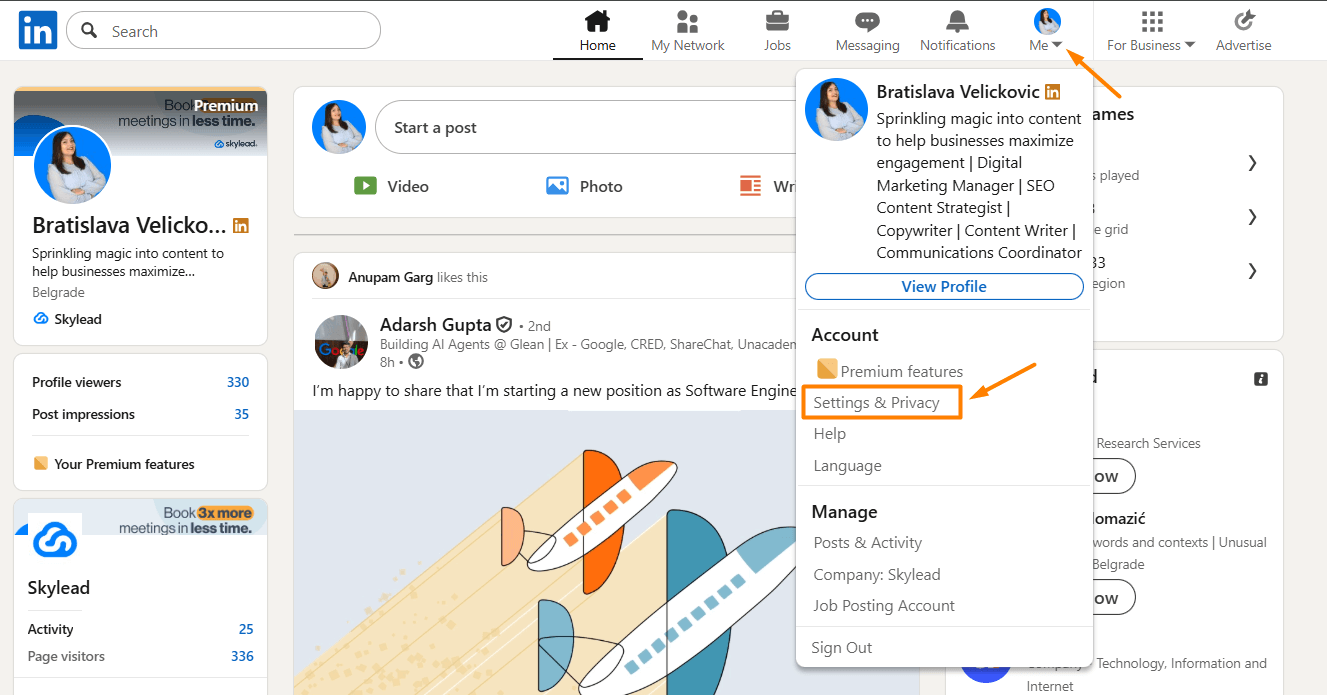
Next, go to the Data privacy tab, where you want to select ‘’Get a copy of your data.’’
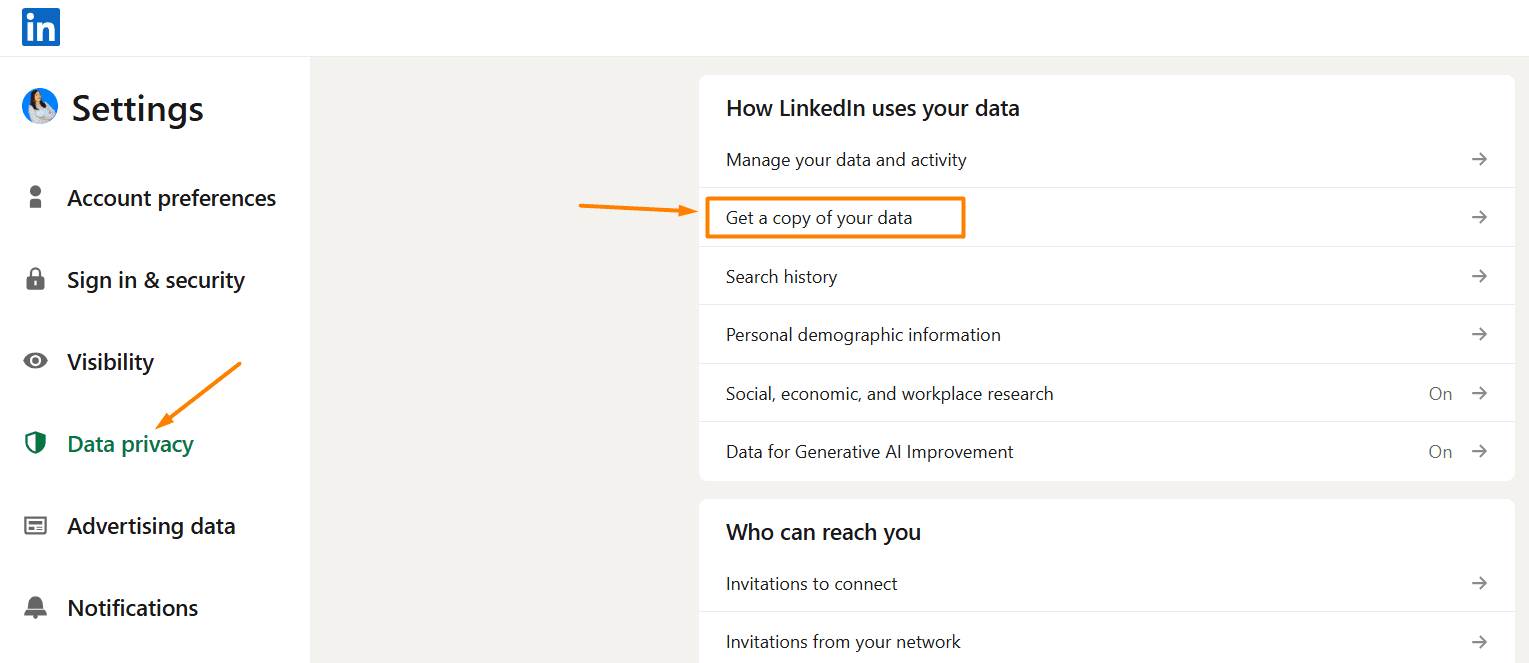
Choose:
‘’Download larger data archive, including connections, verifications, contacts, account history, and information we infer about you based on your profile and activity.’’
…and, finally, click ‘’Request archive.’’
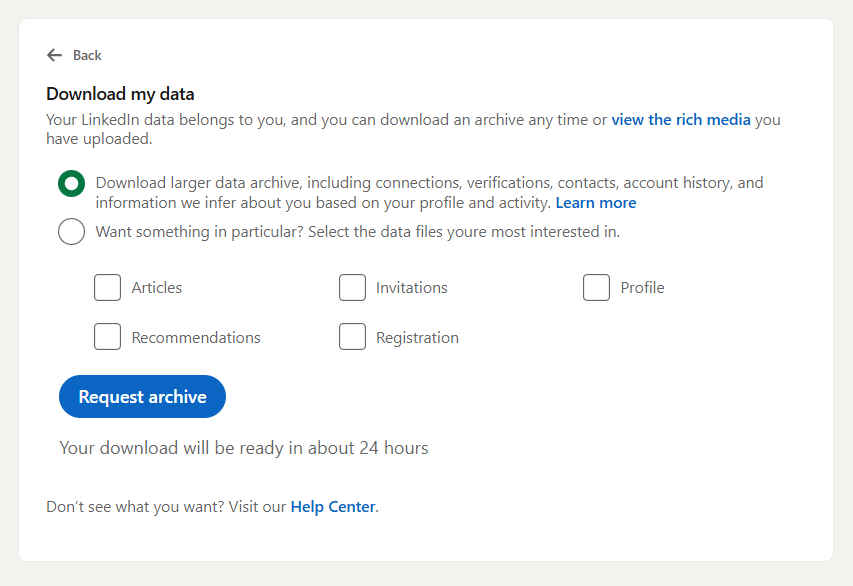
LinkedIn will email you a downloadable CSV file within the next 24 hours. Open it up, and, among other information, you’ll also find that of your connections, including their names, job titles, and, in some cases, email addresses.
📝 Note: This only works for your 1st-degree connections, and even then, only if they’ve allowed LinkedIn to share their email, and it’s likely these are not personal accounts. So, while this isn’t a scalable way to build a new prospecting list, it’s a good way to re-engage existing contacts. Or, take your follow-up game to email, in case they haven’t replied to your LinkedIn follow up message.
Method 4: Combine LinkedIn with Google search
Let’s say none of the previous methods worked. Or maybe you just want to cross-check a contact’s details. Either way, Google can help.
This method is simple: Use what you already know about the lead—such as their name and company—and plug it into a targeted Google search to try to surface their email address from public sources.
Here’s how it works:
1. Use the “site:” search operator
Go to Google and type something like:
- site:amazon.com James Johnson email address
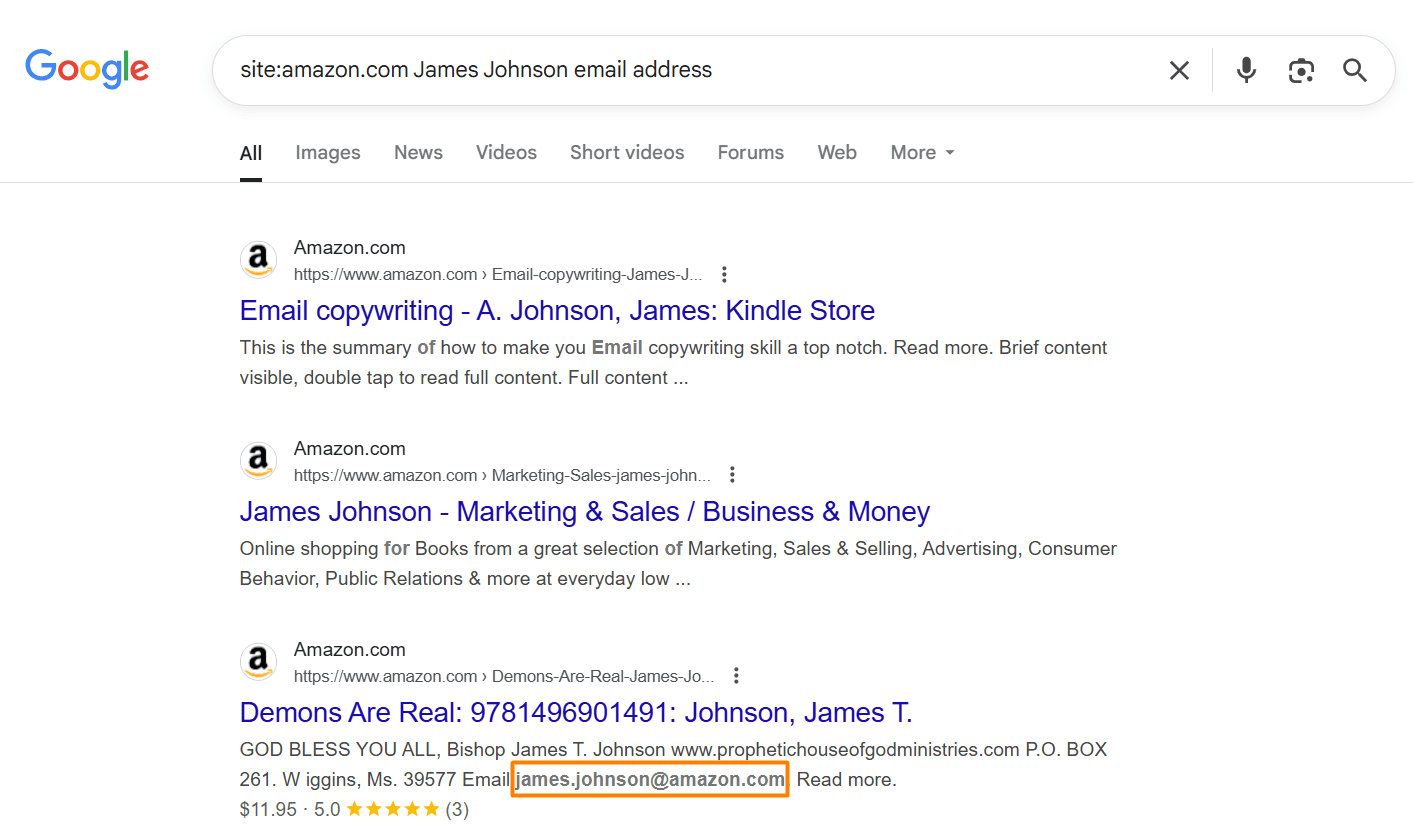
Or try variations like:
- ‘’James Johnson’’ contact site:site:amazon.com
- ‘’James Johnson’’ @amazon.com
This tells Google to search only within the company’s website for any pages where your prospect’s name appears near an email.
2. Try different email formats
If you already know the company domain (e.g., @amazon.com), you can also search for likely email formats like:
- ‘’james.johnson@amazon.com’’
- ‘’j.johnson@amazon.com’’
- ‘’john@amazon.com’’
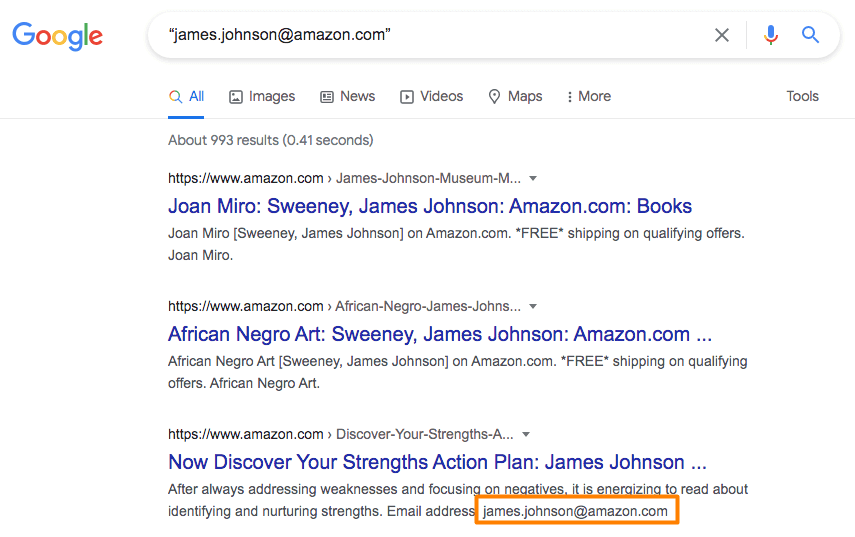
This works surprisingly well for people in public-facing roles, think sales, marketing, media, or executives who’ve spoken at conferences, published blog posts, or been listed in press releases, as their email addresses are likely to be listed online.
3. Don’t forget other platforms
You can also apply the same search strategy using the site operator to other websites, like:
- site:crunchbase.com
- site:github.com
- site:medium.com
- etc.
Basically, anywhere your lead might be mentioned or have a profile.
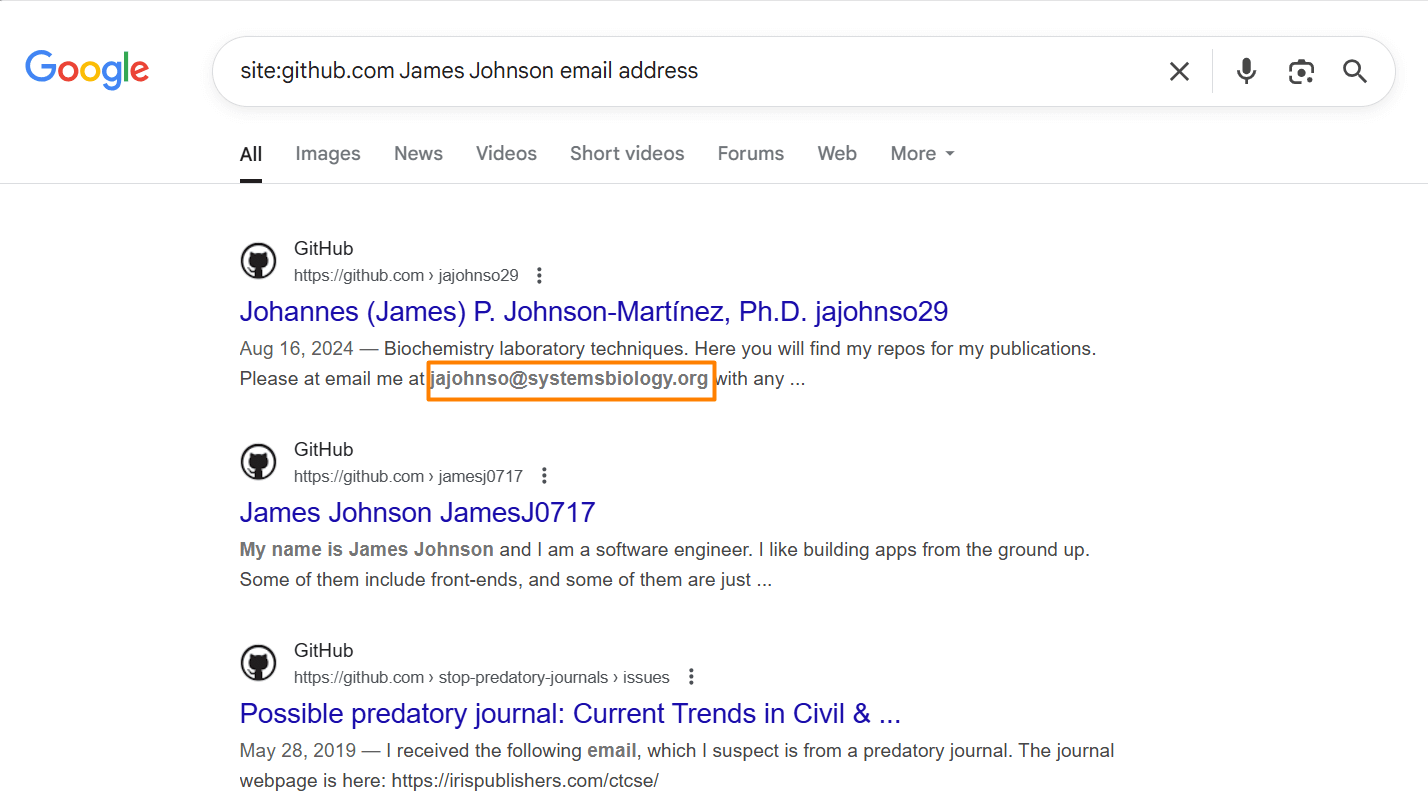
Before reaching out, though, make sure the email you find actually belongs to your prospect, not someone with a similar name. A quick cross-check on LinkedIn or the company website should do the trick.
Method 5: Guess the email pattern
Remember how we said you could guess someone’s email using LinkedIn and Google in the previous method? Well, this takes it one step further.
If you've already found your prospect’s name and company domain, and nothing public turns up, you can try to predict their email using common formats.
Most companies follow a handful of standard patterns when creating email addresses. A few of the most common ones include:
- first.last@company.com
- firstinitiallastname@company.com
- firstname@company.com
- firstlast@company.com
So, if your lead is James Johnson and works at Amazon, their email might be:
- james.johnson@amazon.com
- jjohnson@amazon.com
- james@amazon.com
Now, we’re not saying guess and hit send blindly. That’s risky and spammy.
Instead, run your guessed email through an email verifier first, such as Hunter, NeverBounce, or ZeroBounce. That way, you protect your domain reputation and avoid filling the internet with undelivered emails.
Or, if you’d rather take the manual route (which we recommend you do only if you’ve got a handful of emails to verify), you can insert all email variations in the recipient's field of your email and see which one will be recognized by your provider. If there is one with a profile picture, it is most likely to be the right one.
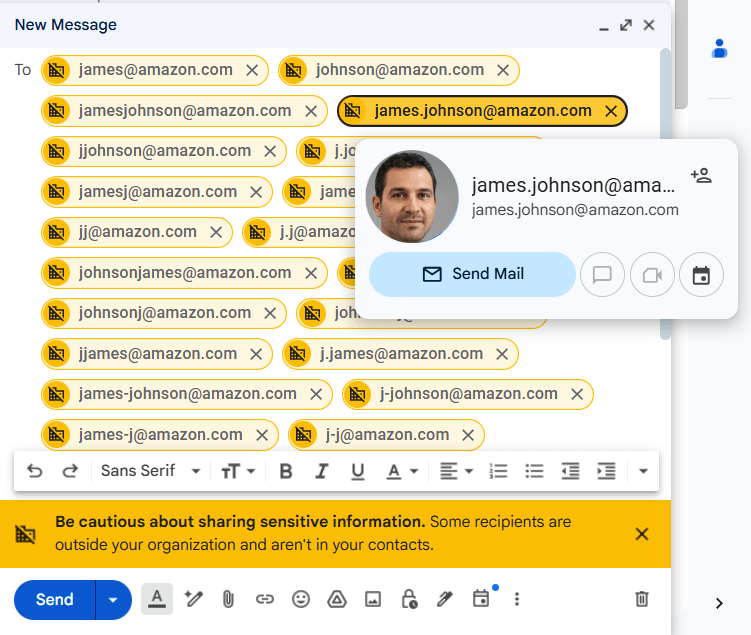
Now, ‘’guessing’’ emails manually, just like verifying them, takes a lot of time and effort. So, if you’d rather speed it up, you can…
Method 6: Use email permutators
These tools take your lead’s first name, last name, and company domain, and automatically generate a list of the most likely email combinations based on common corporate patterns.
You can then copy that list into an email verifier and check which address is valid, without wasting time manually typing out every variation.
The Email Permutator by Mailmetor is one such tool that’s absolutely free to use. What’s more, it’s especially helpful if you’re dealing with multiple prospects at once or want to batch-verify several possible emails quickly.
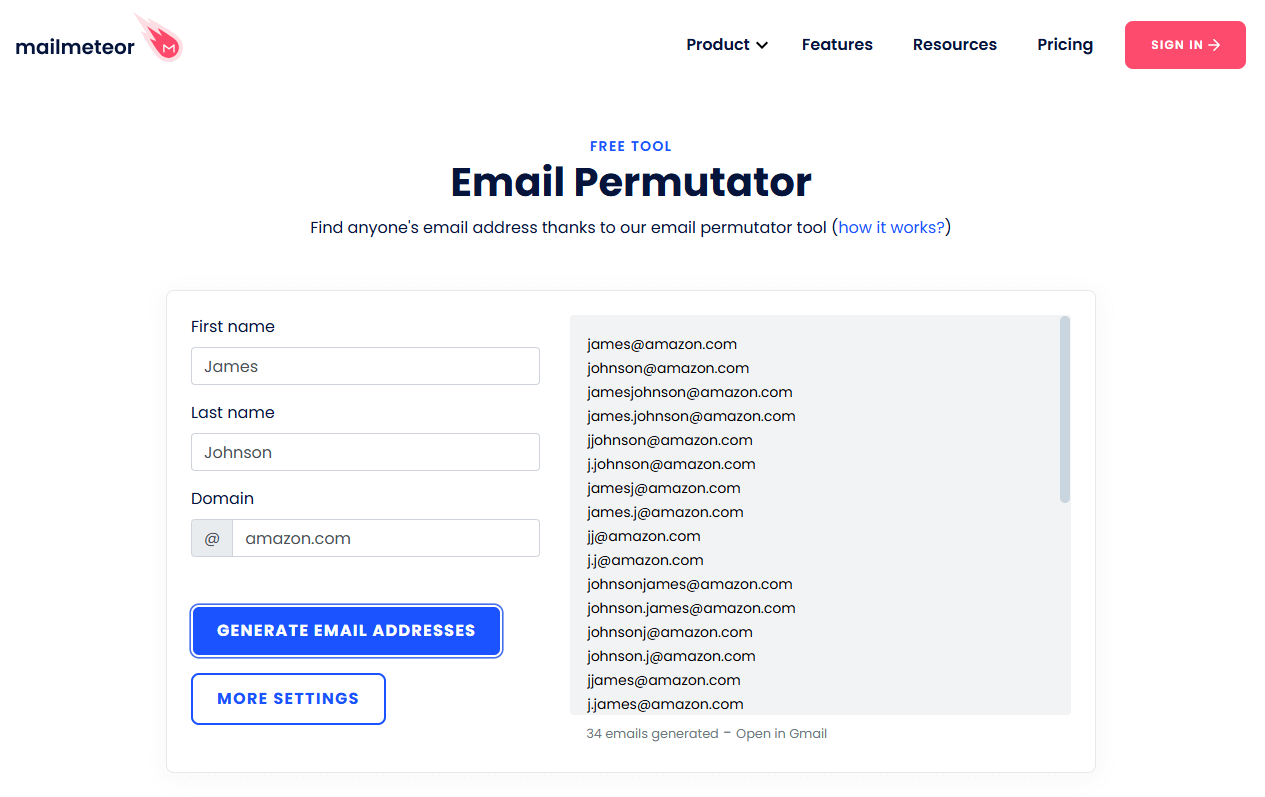
Method 7: Ask them directly
Sometimes, all it takes is… well, asking.
Depending on whether you’re connected with the person or not, there are 2 ways to go about it.
If you’re already connected
Since you’ve already broken the ice, you can be more casual, but still purposeful. Aim for a message that feels personal and makes it worth their while to share their email.
Here’s a template you can adapt:
“Hey {{firstName}}, I wanted to run something by you that’s easier over email than LinkedIn DMs. What’s the best address to reach you at?”
Or, if you want something that’s less vague:
“Hi {{firstName}}, I’ve been meaning to share a quick idea around {{topicOfInterest}} that I thought might be relevant to what you're doing at {{companyName}}. Would it be okay to send it to your email?”
This works better when there’s some context, though. Say, you’ve engaged with their content before, met at an event, or recently connected. But even if you haven’t, a well-written, value-first, and thoughtful message can still land you the address.
If you’re not connected
You’ve got two options here:
- Send a connection request with a short note, then follow up once they accept.
- Use InMail (if you're on LinkedIn Premium) to send a message that includes why you're reaching out and why you're asking for their email.
Either way, keep the message focused, specific, and human. Skip the vague “let’s connect” pitch, and instead offer a reason to reply.
Method 8: Combine Sales Navigator search with data enrichment platforms
If you’re already using LinkedIn Sales Navigator, you’re sitting on one of the most powerful prospecting features LinkedIn has to offer.
While it won’t show you email addresses directly, it lets you:
- Use Sales Navigator search filters to find leads by company size, title, seniority, industry, geography, and more.
- Build ultra-targeted Lead lists.
- Spot buying signals like job changes, company growth, or new funding.
But the question remains: how to find someone’s email on LinkedIn or, rather, Sales Navigator?
Well, we recommend you filter your searches using your ICP and Buying Persona criteria, and save prospective leads into a Lead list.
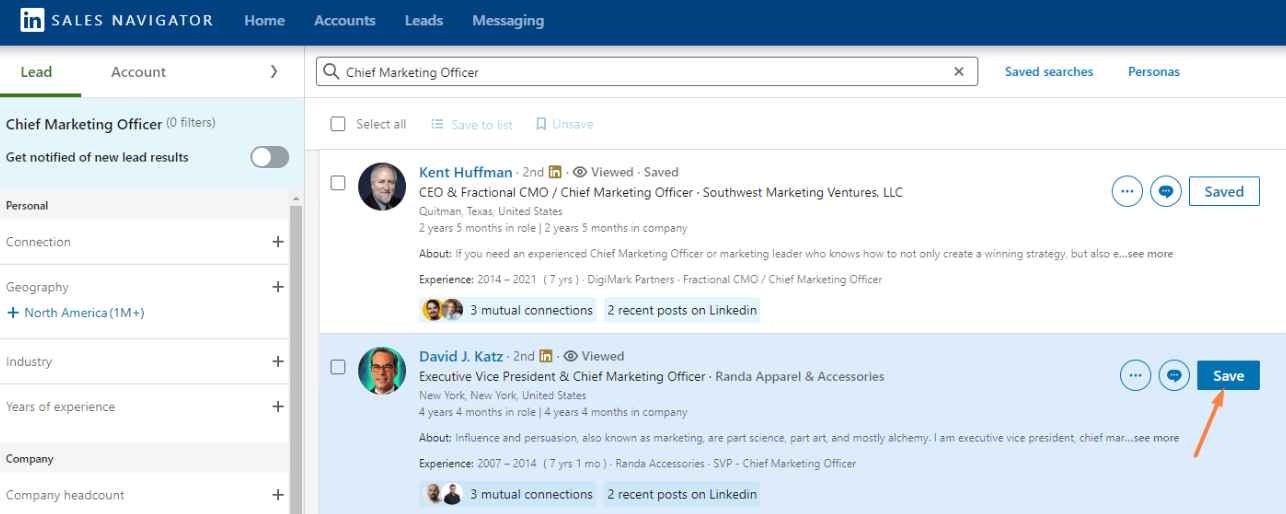
From there, copy and paste their information (e.g., first name, last name, job title, company name, LinkedIn profile URL, and company domain) into a new CSV file. And then, upload that same CSV into one of the data enrichment platform to find your leads’ emails.
Method 9: Use B2B contact databases
So, you’ve built your prospect list using LinkedIn. You’ve got the names, titles, companies, maybe even narrowed them down to a specific industry or location. Everything’s ready for email outreach, except you’re still missing the crucial part: the email address.
If none of the above methods have worked, or if you need to find emails at scale, B2B contact databases (sometimes also called data enrichment platforms) may be able to help.
These platforms help you find verified business emails (and more) based on the information you already have.
A few popular tools that come with built-in contact databases include:
- Apollo.io - Free plan with 100 credits (additional paid plans with more credits are available).
- Lusha - Free plan with 50 credits (additional paid plans with more credits are available).
- ZoomInfo - No free plan available; pricing is quoted individually.
- Cognism - No free plan available; pricing is quoted individually.
As you can see, 2 of these tools come with free plans, albeit limited. Therefore, if you’re conducting high-volume outreach, you’ll likely require a paid plan. Nevertheless, whatever tool you choose to use, always double-check the validity of the email address before you hit send (we’ll talk about how to do that later on).
Now, believe it or not, there’s a tool that finds your leads’ emails, double-verifies their existence, AND can help you with your cold outreach - Skylead!
Stick around, as we’ll show you exactly how it works!
Method 10: Use Skylead
The methods we talked about so far can help you find someone’s email address. But the problem is, they are either too manual or require multiple tools to do it.
If you want to skip using multiple tools, and keep everything in one flow, we’ve got a better solution: Skylead — the ultimate sales engagement tool.
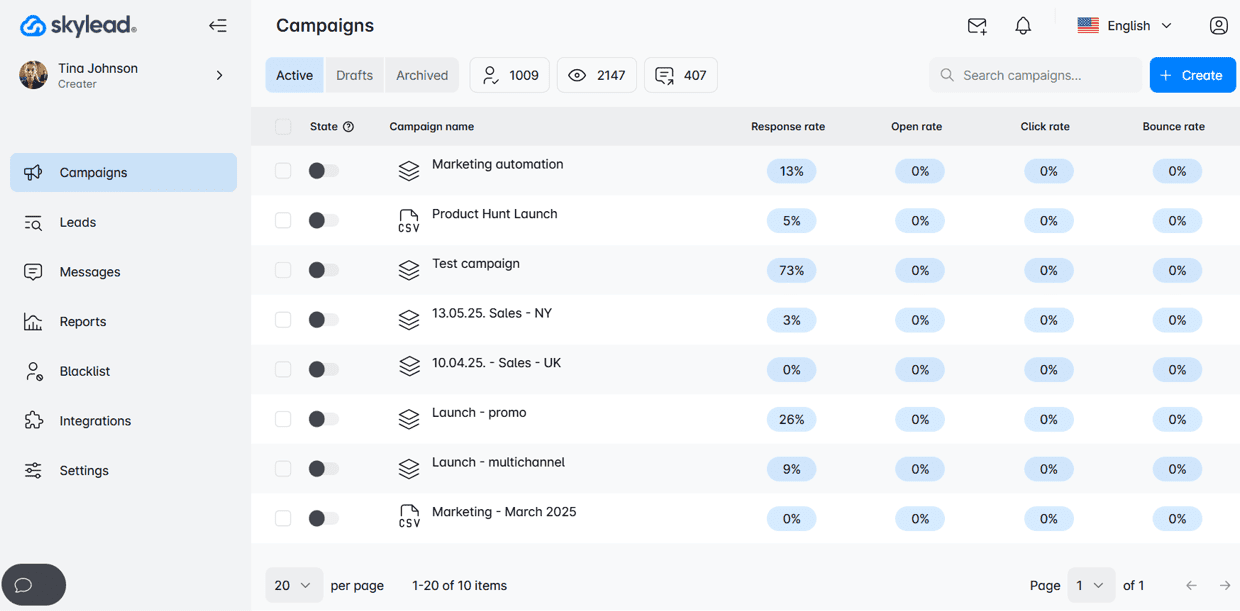
Skylead was the first tool on the market to introduce Smart sequences - algorithms that help you combine outreach actions with if/else conditions. As a result, you get coherent outreach flows that helps you unfold outreach according to the way your prospects behave.
Now, you might be wondering, why set up an outreach sequence if you don’t have their email yet?
Because, inside your sequence, you can add a “Find and verify email” step.
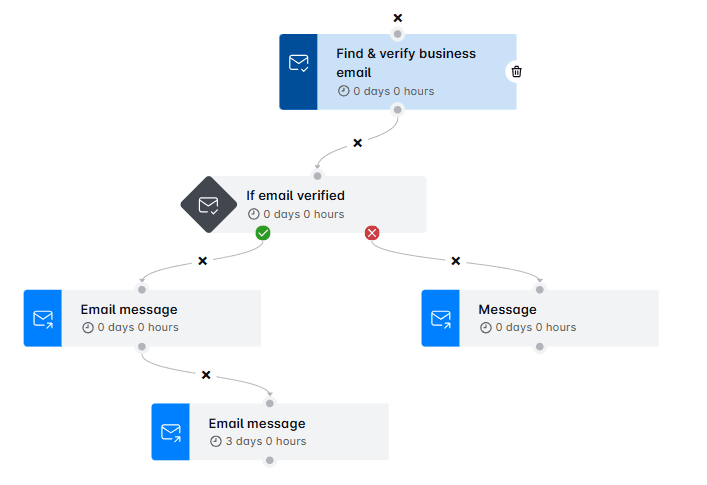
This means that as your campaign runs, Skylead will discover and double-verify your leads’ email addresses without breaking your outreach flow and before sending any emails, helping you:
- Avoid high bounce rates
- Protect your domain reputation
And unlike most tools we mentioned earlier, we don’t charge you per email found or cap you with credits. For a flat $100/month, you get:
- Unlimited email discovery and verification
- Unlimited mailboxes to send tens of thousands of emails per month
- Market-leading email finding accuracy
All this in one platform. Pretty handy, wouldn’t you say?
Is finding someone’s email on LinkedIn enough for outreach?
Short answer: not really.
Finding the right email address is just step one. But if you want to actually land in someone’s inbox and get a reply, you’ll need to go through a few more steps.
Verify the emails
Never send an email to an unverified address to minimize the chances of it bouncing. Sure, one bounce won’t kill your sender reputation, but too many will.
So, before hitting send, run every email through a verifier like Hunter, NeverBounce, or ZeroBounce. And if you’re using Skylead, good news: the tool double-verifies all emails as part of your outreach flow, so you don’t have to do it manually.
Warm up your email domain
If you're sending cold emails from a fresh domain or inbox, warming it up is non-negotiable. Without it, your emails might land in spam, or worse, not get delivered at all.
This is one more situation that Skylead can help you with. Namely, we have partnered up with an email warm up tool, InboxFlare, to bring you infinite email warm up functionality. As part of it, you can warm up unlimited mailboxes free of charge as an existing Skylead user and, thus, maximize your deliverability rate.
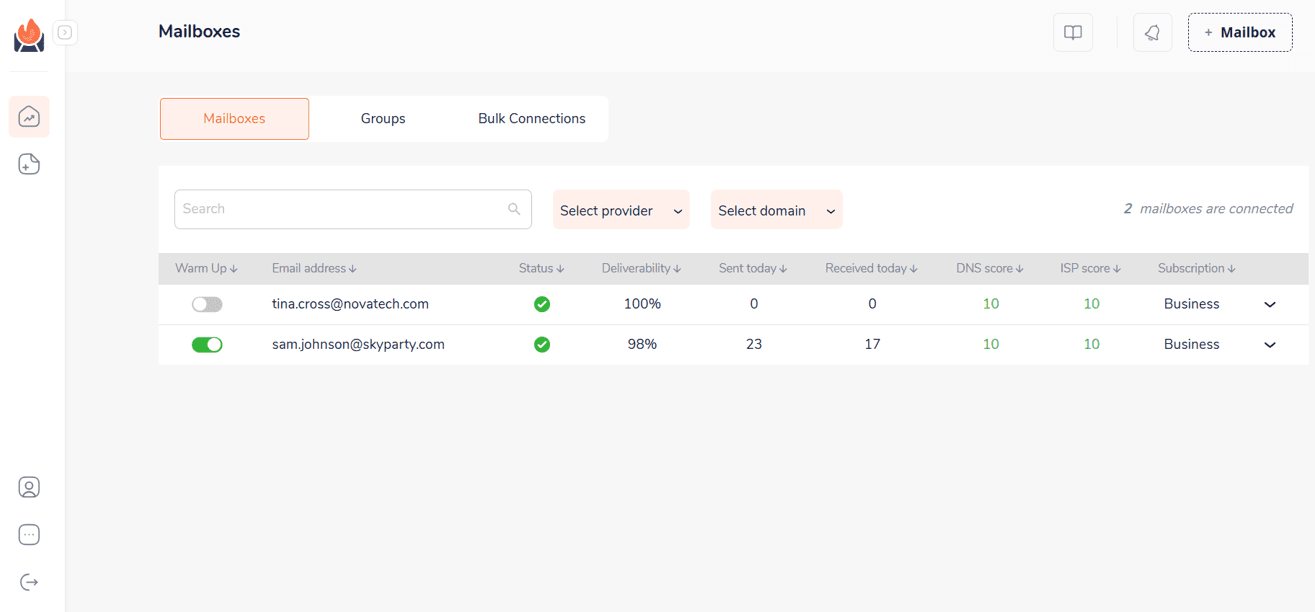
Personalize your message
An email is just a door. But personalization, whether based on job title, pain points, mutual connections, or recent activity, is what actually gets replies. So, as you go about writing emails, mention something specific and make it relevant.
Or, to bring it up a notch, rely on Skylead’s native Image & GIF personalization feature, which lets you create personalized visuals at scale, complete with:
- Your and/or your leads’ first and last name, profile photo, and/or company logo
- Custom text
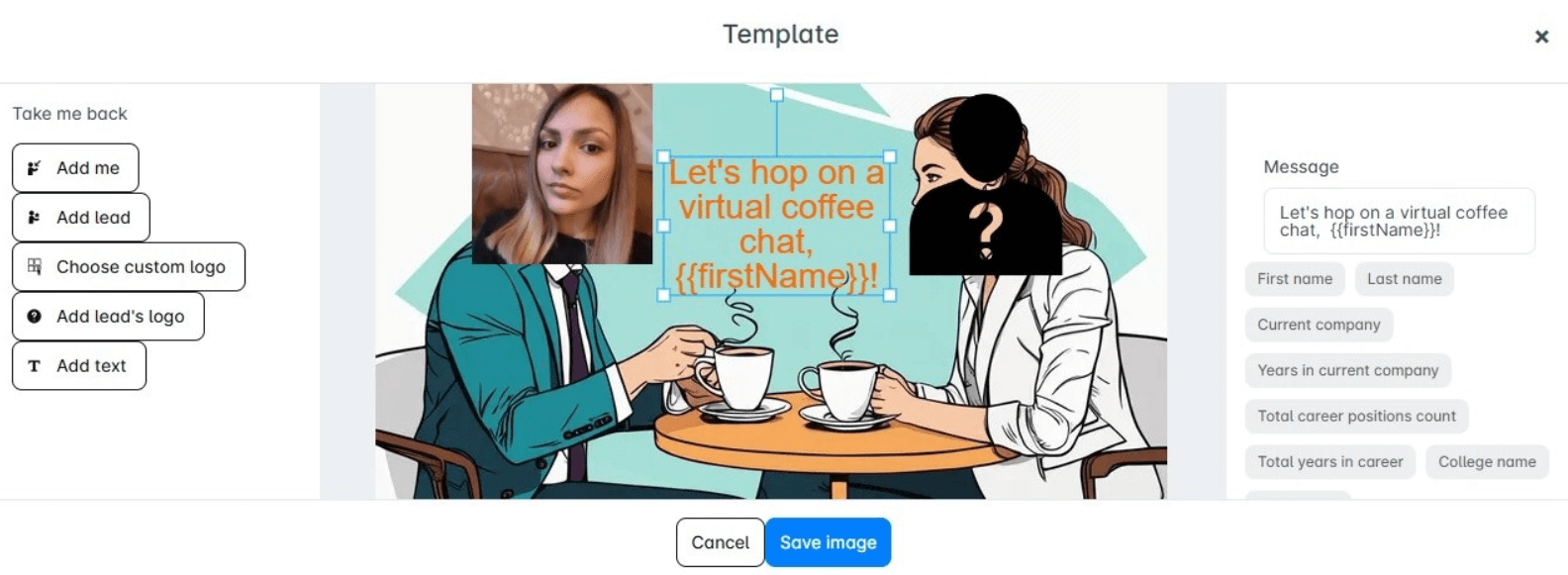
Choose to use it and you might just see your response rate rise up to 76%, as ours did!
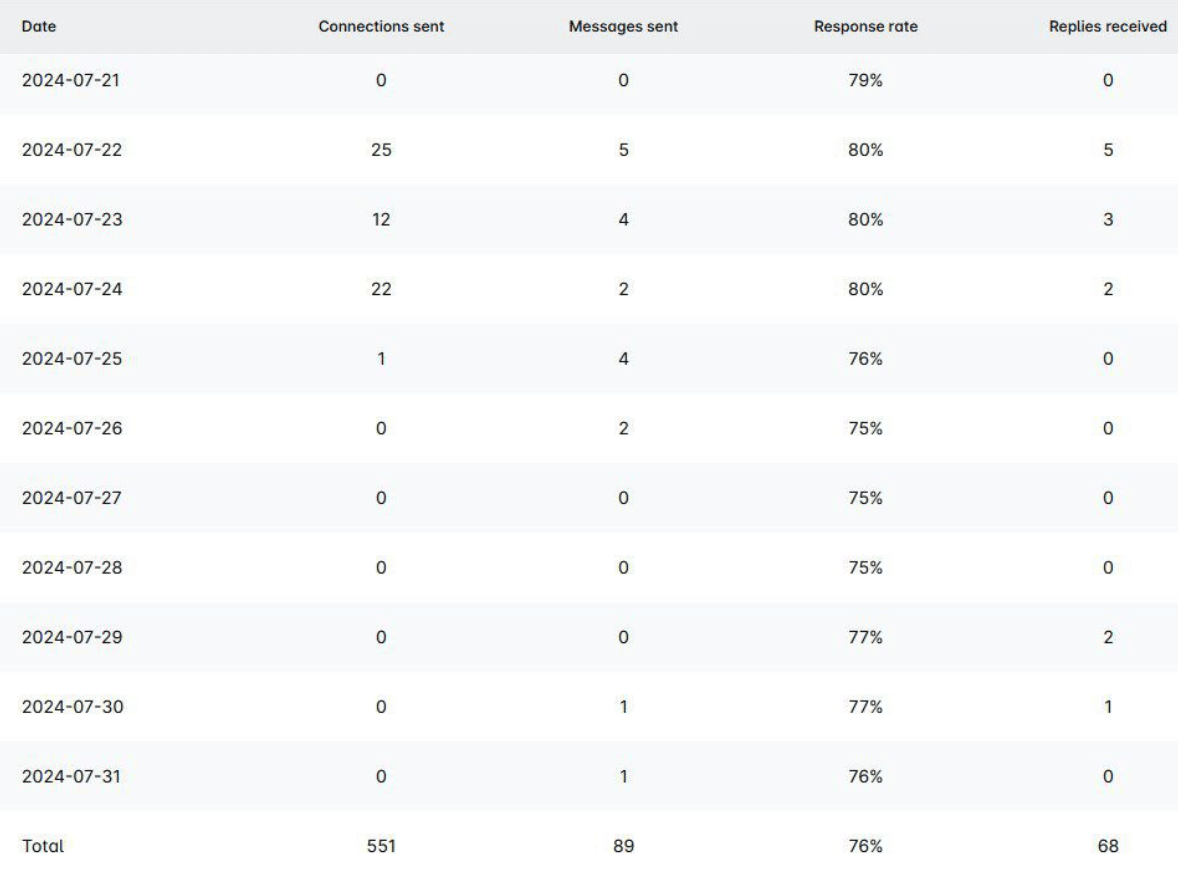
Follow up
Most replies don’t come from your first email. In fact, it often takes 2-3 touches before someone responds. Following up isn’t the same as spamming, though. Thus, if you don’t want to come across as unprofessional, space out your follow up emails after no response by 3-5 days each, and add value in each touchpoint.
Stay compliant
Last but not least, it’s important that you respect privacy laws like GDPR, CAN-SPAM, or CASL. To do so, make sure you always include an opt-out option in your email and avoid shady scraping practices. After all, cold outreach works best when it’s thoughtful and respectful.
Frequently asked questions (FAQs)
Does LinkedIn give out email addresses?
Yes and no. LinkedIn only shows a user’s email to their 1st degree connections, and even then, users can choose to hide it. For non-connections, email addresses aren’t visible.
How to get someone's contact info from LinkedIn?
Go to their LinkedIn profile and click “Contact Info.” If you’re connected, you might see their email or other details. If not, send a connection request or a polite message. Alternatively, use a trusted email finder tool to uncover their contact information.
Is it legal to find and use someone’s email from LinkedIn?
Absolutely, as long as you use ethical methods and respect privacy laws and LinkedIn's ToS. Always use reputable tools and avoid scraping or collecting emails in ways that violate LinkedIn’s terms of service. Also, your outreach should be value-driven and respectful. Thus, if someone asks to be removed from your email list, honor that request.
What’s the easiest way to find someone’s email on LinkedIn?
The quickest and easiest method is to check the person’s LinkedIn profile and click on their “Contact Info.” If they’ve chosen to share their email, you’ll find it there. However, not everyone lists their email publicly, so you may need to try alternative methods if it’s not visible.
Can I export all my LinkedIn connections’ emails at once?
Yes, LinkedIn allows you to export the emails of your 1st degree connections. Go to Settings & Privacy > Data Privacy > Get a Copy of Your Data > Request Archive. You’ll receive a file that contains emails of those contacts who have chosen to share them, among other information.
You know how to find someone’s email on LinkedIn - now make it count
You’ve got the tactics, and you’ve got the strategy to make it work.
But here’s the thing: anyone can learn how to find someone’s email on LinkedIn. What sets great outreach apart is what happens next - the message, the follow-up, the experience you create on the other end.
So before you hit send, ask yourself:
Is this relevant? Or timely? Or something I’d reply to if I were on the other side?
And if you want to scale that kind of outreach without losing the personal touch, Skylead’s got your back.
With unlimited email discovery and verification, outreach sequences, native personalization, and email warm-up functionality, we give you everything you need to go from finding emails to starting meaningful conversations. Try it free for 7 days!


